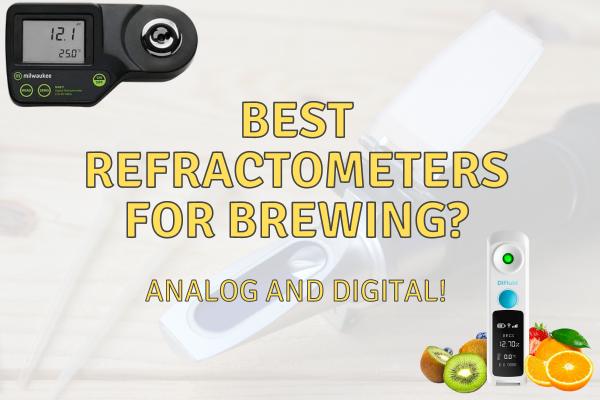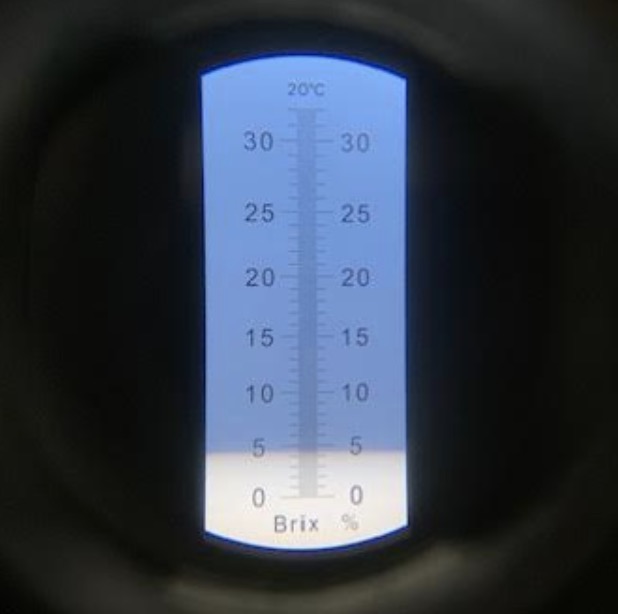As an experienced home brewer, I understand the concerns that most new brewers have when it comes to figuring out if their fermentation is complete without using a hydrometer.
While a hydrometer is a very useful tool for measuring the specific gravity of your brew, it’s not the only method available.
You can tell when fermentation is complete without a hydrometer by observing the physical signs in your brew, making use of airlock activity, and by tasting your brew.
In fact, there are several signs that you can look out for to know if your fermentation is complete. In this post, I’ll share insights from my personal experience and discuss how to tell when fermentation is complete without a hydrometer.
Visual Signs of Fermentation Completion
One of the simplest ways to tell if your fermentation is complete is by observing. A clear sign that fermentation has ended is when the krausen (the foamy head that forms on top of your brew during fermentation) has fallen back into the brew.
Additionally, your brew will become clearer as the yeast settles at the bottom of the fermenter, also known as flocculation.
Airlock Activity
The airlock is a device that allows gas to escape from your fermenter without letting any outside air in. When fermentation is happening, the yeast is producing CO2, which will cause the airlock to bubble.

When these bubbles stop, it’s a good indication that fermentation might be complete.
However, it’s important to remember that the absence of airlock activity doesn’t always mean fermentation has ended. Changes in temperature or pressure could also cause the airlock to stop bubbling.
Taste Test
Although it’s not the most scientific method, tasting your brew can also help determine if fermentation is done.

A finished beer should taste balanced and not overly sweet. If it still tastes very sweet, then it’s likely that the yeast hasn’t finished consuming all the sugars.
The Smell Test
The aroma of your brew can provide clues about the state of fermentation. A strong, yeasty smell is a clear sign that fermentation is still ongoing. When fermentation is complete, this smell will usually subside.
Using a Refractometer
A refractometer is a tool that measures the amount of sugar in a solution by looking at how much it bends light.

Refractometers are generally considered more accurate than hydrometers in various applications, but the consensus can vary depending on the specific use case.
Refractometers can be more accurate than hydrometers, especially when measuring the sugar content of finished brews.
Alcohol can interfere with the refractive index, leading to inaccurate readings but alcohol also interfers with the density of the brew.

In addition, the tiny amounts of CO2 bubbles that are present at the end of fermentation will “lift” the hydrometer slightly, leading to skewed readings.
Waiting It Out
Patience is a virtue in home brewing. One of the surest ways to know if fermentation is complete is simply by giving it enough time. Most ales will complete fermentation within 2 weeks, while lagers could take up to 4 weeks.
Secondary Fermentation
Some brewers choose to transfer their beer to a secondary fermenter for aging and clarification.
If you’re using secondary fermentation, the completion of primary fermentation can often be determined by a significant reduction in airlock activity.
Conclusion
In conclusion, there are several ways to tell when fermentation is complete without a hydrometer. These include observing visual signs, monitoring airlock activity, tasting and smelling your brew, using a refractometer, waiting it out, and observing secondary fermentation.
Here are the key takeaways:
- Krausen falling back into the brew is a clear visual sign of fermentation completion.
- The absence of airlock activity can indicate that fermentation might be finished.
- A finished beer should taste balanced and not overly sweet.
- A strong, yeasty smell indicates ongoing fermentation.
- A refractometer can provide a general idea of where the fermentation is at.
- Most ales complete fermentation within 2 weeks, while lagers could take up to 4 weeks.
- If you’re using secondary fermentation, the completion of primary fermentation can often be determined by a significant reduction in airlock activity.
- Patience is key in home brewing.
- Tasting and smelling your brew are invaluable, albeit unscientific, methods of checking fermentation progress.
- Visual observation remains a simple and effective method of assessing fermentation status.
In my personal experience, I’ve found the combination of these methods to be the most reliable in determining if fermentation is complete without a hydrometer.
You get a form of intuition along the way!
Brewing beer is as much an art as it is a science, and learning to trust your senses and intuition is an important part of the process.
FAQs
How long does fermentation of glucose take?
The fermentation of glucose typically takes a few hours to a couple of days, depending on the specific conditions and the type of organism involved.
How do you know when fermentation is complete?
You can determine when fermentation is complete by observing certain signs. One key indicator is the cessation of bubbles or visible activity in the fermentation vessel. Additionally, if you notice a stable specific gravity reading over a period of time, it suggests that fermentation has finished. Another way to confirm completion is by tasting the product. If it has reached the desired flavor profile and the sweetness has been converted, fermentation is likely done.
How do you know when fermentation of glucose is complete?
You can determine when fermentation of glucose is complete by monitoring the production of carbon dioxide and the decrease in glucose concentration. When the production of carbon dioxide stops and the glucose concentration reaches a very low level, it indicates that fermentation is likely complete.
Is glucose easily fermented?
Yes, glucose can be easily fermented.
Why is glucose easily fermented?
Glucose is easily fermented because it can be broken down quickly by microorganisms or cells to produce energy. This process, known as fermentation, does not require oxygen and can occur in the absence of it. The simplicity of glucose’s molecular structure allows for efficient breakdown, making it an ideal source for fermentation.
How can we say if the fermentation is already complete?
We can determine if the fermentation is complete by observing certain signs. These signs include the absence of bubbles or activity in the fermentation vessel, a stable and consistent temperature, no noticeable changes in the aroma or flavor, and the specific gravity of the liquid reaching a target value.




